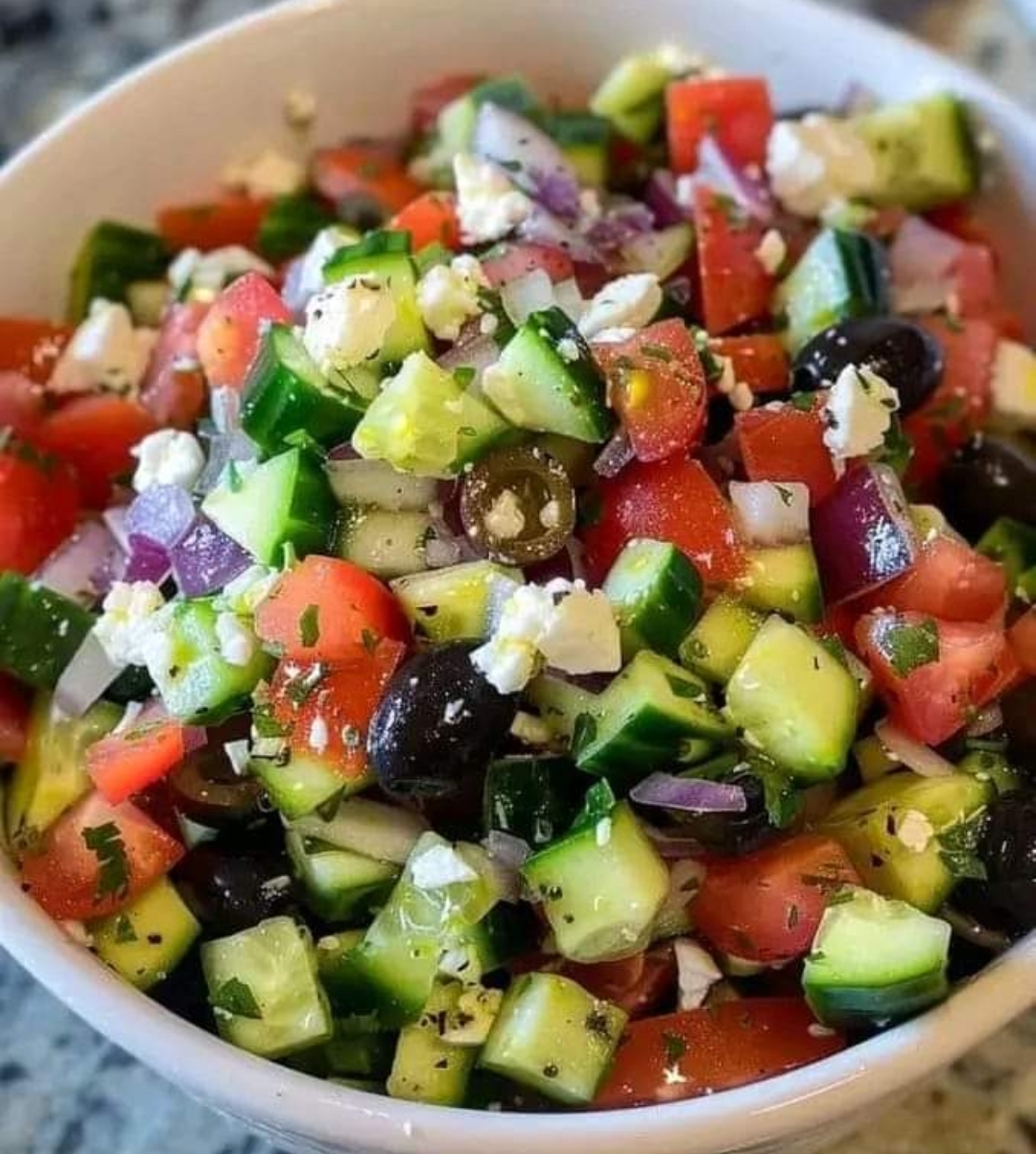Greek Salsa is a unique dance style that blends traditional Greek dance elements with the rhythms and steps of Salsa. This fusion creates an energetic and dynamic form of dance, combining the fluid, expressive movements of Greek folk dances with the fast-paced, rhythmic beats of Salsa music. The result is a vibrant, cross-cultural dance experience that celebrates both Greek and Latin influences. This style often features the use of traditional Greek music instruments and rhythms, along with the characteristic turns and spins of Salsa. It’s an exciting way to explore and enjoy the rich cultural traditions of both dance forms.
ingrédients
1 1/4 cups diced cucumber
1 cup diced Roma or beefsteak tomatoes
1/2 diced red onion
1/4 cup sliced black black olives
1 1/2 Tbsp lemon juice
1 Tbsp olive oil
1/4 tsp dried oregano
1/2 tsp dried dill weed (or 1 tsp fresh chopped dill weed)
salt and pepper to taste
1/2 cup crumbled feta cheese
pita chips or pita wedges for dipping
PREPARATION
Combine cucumber, tomatoes, onion, and black olives in a large bowl.
In a smaller bowl whisk together lemon juice, olive oil, oregano, dill, salt, and pepper. Pour dressing over vegetables and toss well to combine. Refrigerate for 1 hour.
Fold in feta cheese just before serving. Use as a dip with pitas, chips, or as a side dish with fish or chicken.
To store Greek Salsa or any dance style-related materials, consider the following:
- Dance Shoes and Clothing: Store dance shoes in a cool, dry place to prevent mold and damage. Keep them in a breathable bag or box. Dance clothing should be washed according to care instructions and stored in a clean, dry area.
- Music and Recordings: Digital music files should be backed up on multiple devices or cloud storage. Physical recordings (like CDs or vinyl) should be kept in a cool, dry place away from direct sunlight to avoid damage.
- Instructional Materials: Store DVDs, books, or other instructional materials in a dry, cool place. Use shelves or storage containers to keep them organized and protected from dust or damage.
- Dance Accessories: Accessories such as props or costumes should be kept in appropriate storage containers or garment bags to avoid wear and tear.
- Dance Space: Maintain a clean and dry dance area to prevent damage to flooring or equipment. Regularly check for any necessary repairs or cleaning.
Proper storage helps maintain the quality and longevity of dance materials and equipment.
For Greek Salsa, incorporating variations and tips can help enhance your dance experience and improve your technique. Here are some ideas:
Variations:
- Footwork: Experiment with different footwork patterns from both Greek and Salsa traditions. For instance, try incorporating Greek-style foot patterns into Salsa steps or vice versa.
- Turns and Spins: Add Greek-style turns or spins into Salsa routines. Greek dances often feature intricate spinning patterns that can blend well with Salsa’s turning techniques.
- Body Movements: Incorporate Greek dance body movements, like the fluid arm movements and torso twists, into Salsa steps to create a unique style.
- Music Fusion: Combine traditional Greek music elements with Salsa rhythms. For example, blend a Greek folk melody with a Salsa beat to create a distinctive dance track.
- Partner Work: Explore variations in partner work by mixing Salsa’s leading and following techniques with Greek dance’s hand-holding and circular patterns.
Tips:
- Practice Regularly: Consistent practice helps in mastering both the technical aspects and the fusion of styles. Spend time focusing on each style separately before combining them.
- Stay Balanced: Focus on maintaining good balance and posture. Greek dances often involve intricate footwork and balance, which should be maintained when integrating with Salsa.
- Listen to the Music: Pay attention to the rhythms and nuances of the music. Understanding the musical structure will help you better integrate Greek and Salsa elements.
- Use Videos: Watch videos of Greek Salsa performances or instructional content to gain inspiration and learn new techniques.
- Take Classes: If possible, take classes or workshops that focus on either Greek or Salsa dance to improve your skills and gain insights from experienced instructors.
- Have Fun: Enjoy the process of blending these two dance styles. The key to a successful fusion is creativity and enthusiasm.
By experimenting with these variations and following these tips, you can develop a unique and exciting Greek Salsa style that showcases the best of both traditions.
